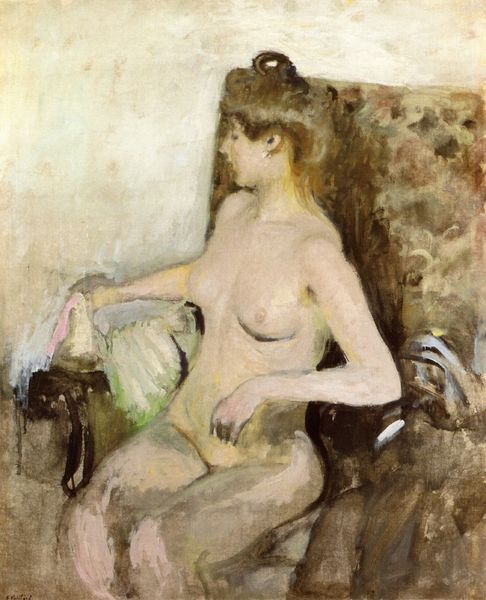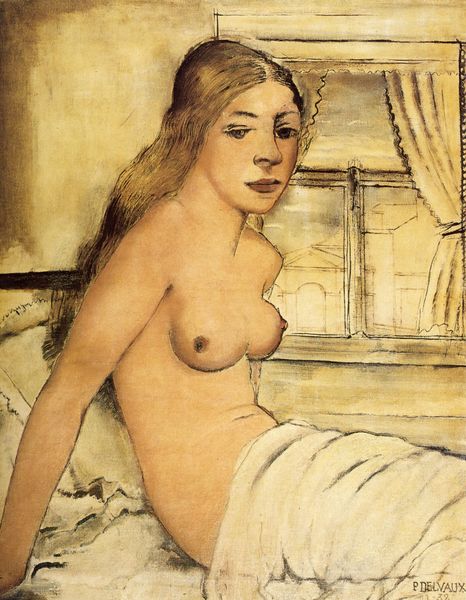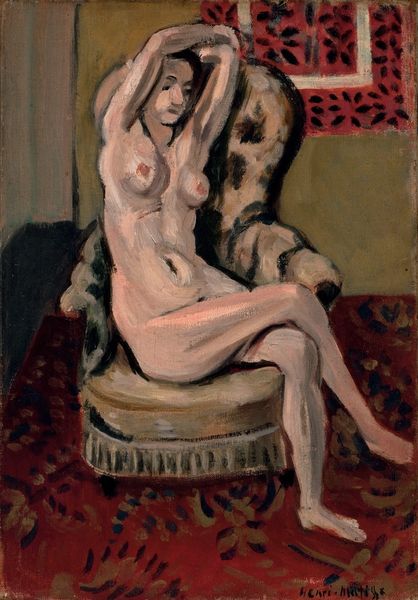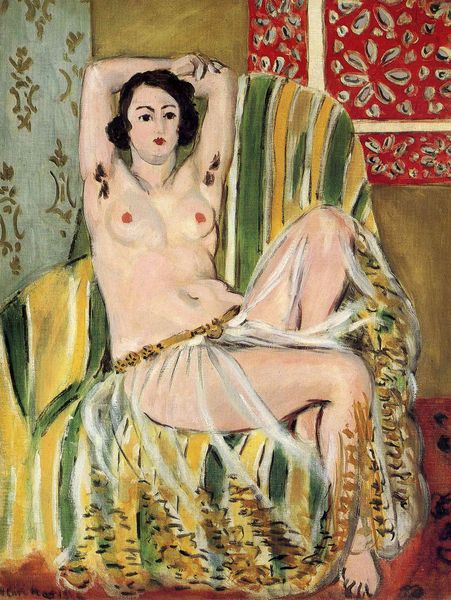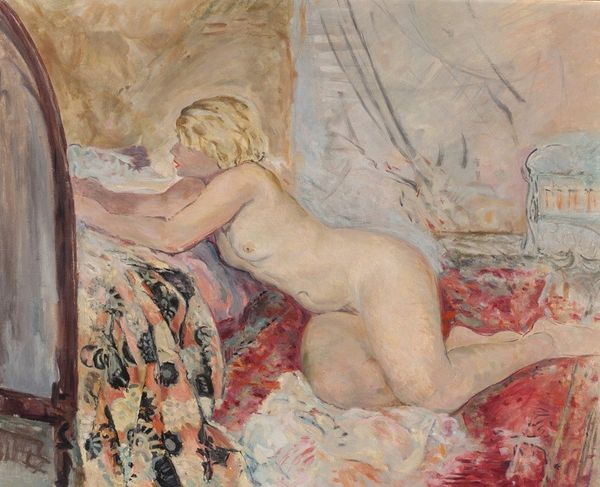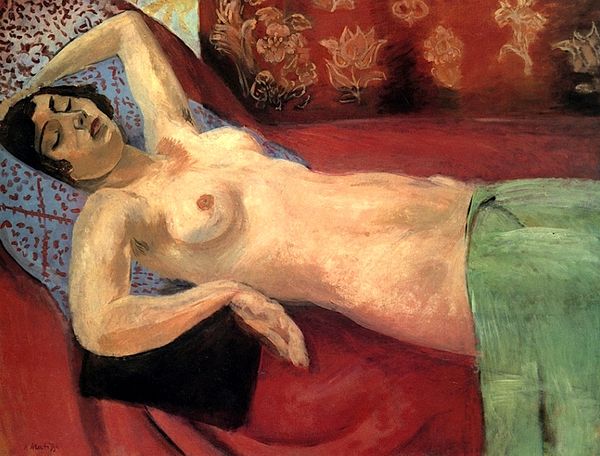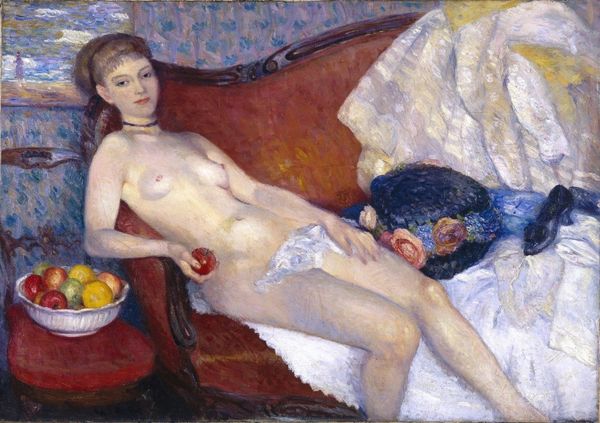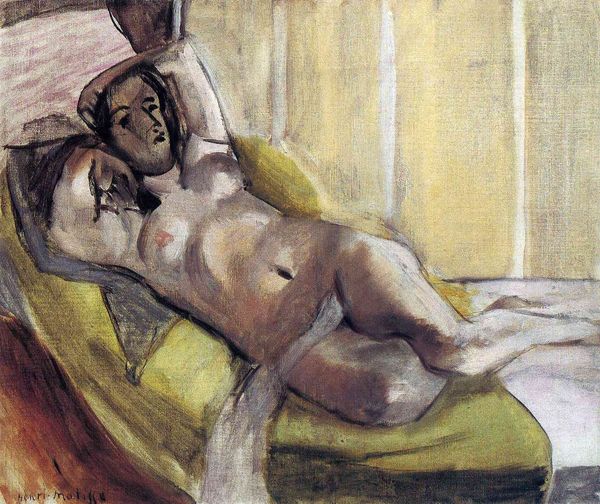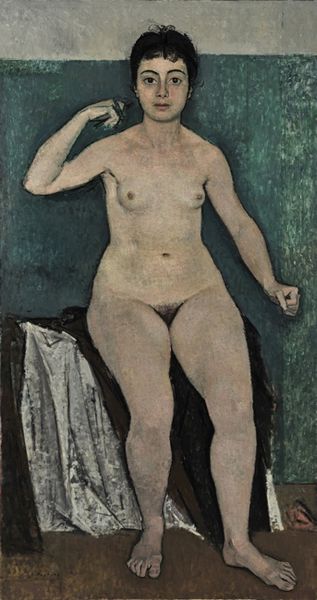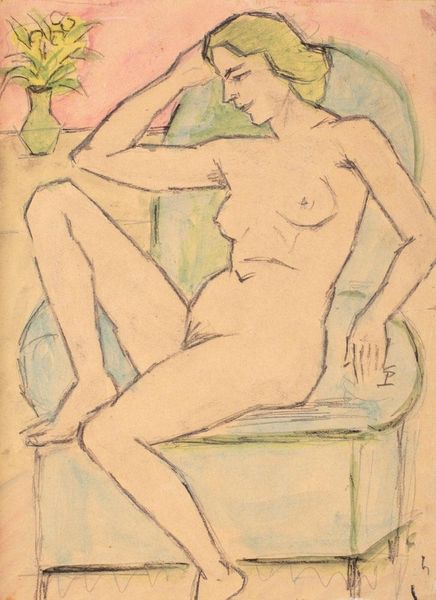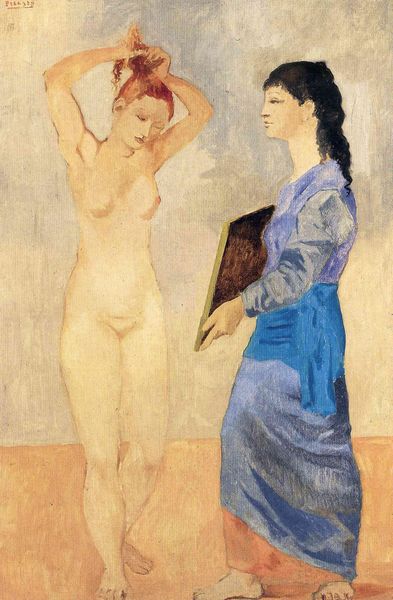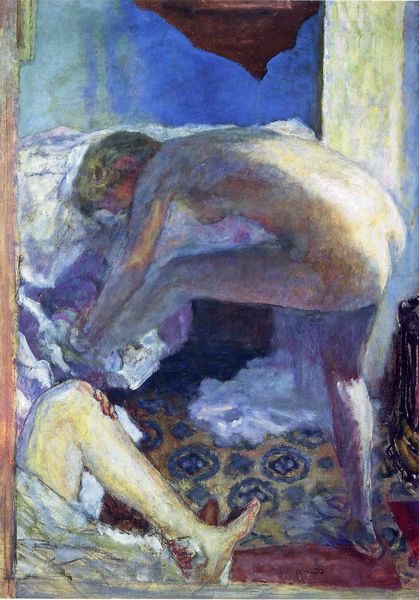
Dimensions: 65 x 81 cm
Copyright: Henri Matisse,Fair Use
Curator: Henri Matisse painted "Odalisque with Magnolia" in 1924, placing the work squarely within his exploration of the odalisque theme and the broader Orientalist context of the early 20th century. Editor: Mmm, it's all very loose, isn't it? Relaxed. Almost like she's caught between waking and dreaming. I like the pose, so informal. Curator: Right. The "odalisque," as a figure, historically exoticized and sexualized women from North Africa and the Middle East. Matisse's portrayals often draw on these traditions, while also incorporating his own aesthetic sensibilities and interests in color and form. This work, with its visible brushstrokes, embodies elements of both Fauvism and modernism. Considering that history of colonialism and its portrayal in art, do you see an active representation or more a decorative element at play? Editor: I can definitely see the art-historical side, with the reference to Orientalism... But something in her expression makes me think. Perhaps she isn't merely decorative but holds a certain defiance. And I think Matisse must have felt something similar—maybe he wasn’t fully aware of the weight of the Orientalist image? The flower she’s close to is also gorgeous! And it brings warmth. Curator: Indeed, there’s a striking push and pull. Matisse here plays with ideas of interiority and the "harem," a popular fantasy trope for male artists at the time. What seems interesting to me is how, on the one hand, his nudes seem to celebrate pleasure, whilst simultaneously upholding quite troubling perspectives, such as the male gaze. What is Matisse really suggesting about this woman’s space and selfhood? The way that her eyes looks at you too is like “what’s up?”; she wants you to consider something beyond male pleasures. Editor: Maybe he’s showing us the possibility of defiance from within this enclosed, historically problematic, space? Or perhaps it’s wishful thinking on my part... Maybe there's even an element of subversion that escapes the artist's full control once the artwork goes into the world, who knows? Either way, it sparks a needed conversation about those artistic choices. Curator: Precisely! The power of art is in its ability to initiate exactly this type of dialogue, revealing complicated power dynamics in new and meaningful ways. Editor: And sometimes, to get delightfully lost in the colors.
Comments
No comments
Be the first to comment and join the conversation on the ultimate creative platform.
